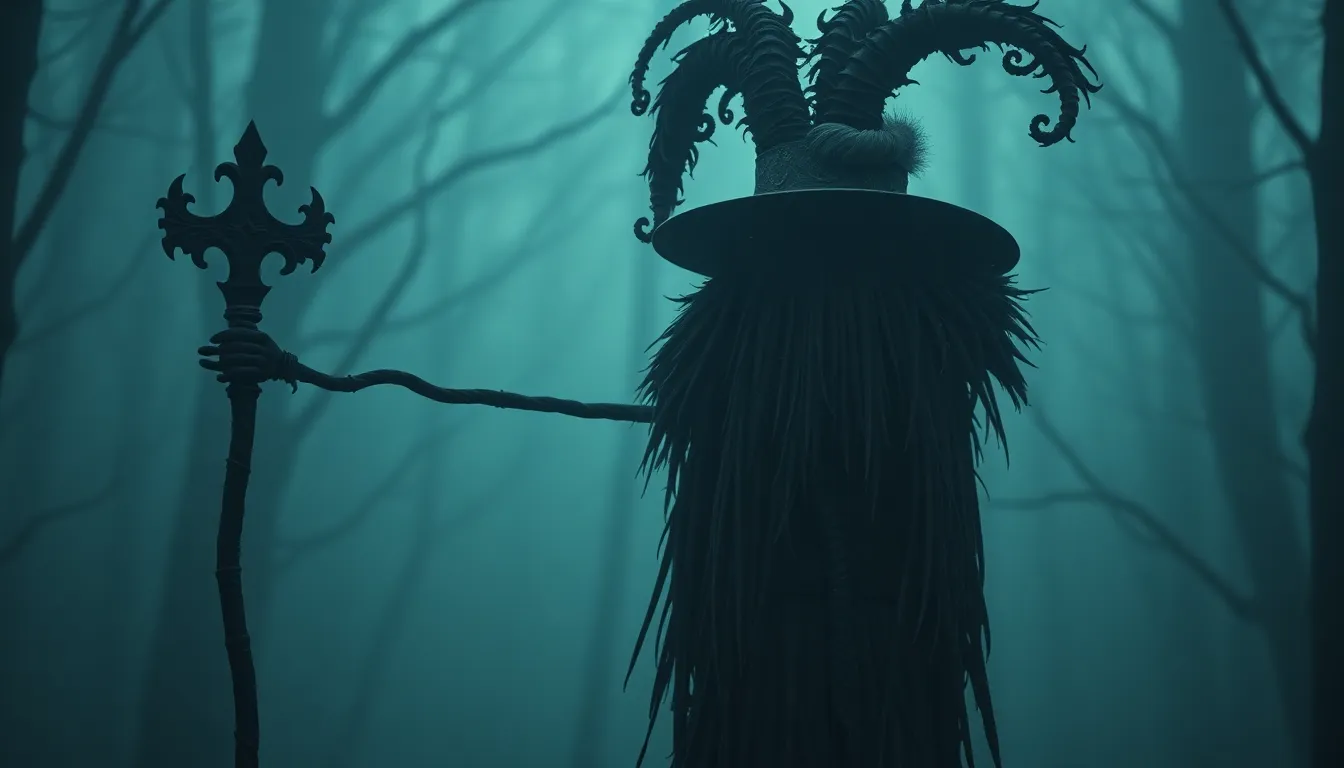The Most Captivating Trickster Legends You’ve Never Heard
Introduction to Trickster Legends
Trickster legends are fascinating narratives found across various cultures, characterized by cunning, wit, and the ability to deceive or outsmart others. These figures, often embodying the archetype of the trickster, play crucial roles in folklore, serving as both challengers of the status quo and agents of transformation. The importance of tricksters in the cultural narratives cannot be overstated; they highlight human flaws, societal norms, and moral lessons through their often humorous and subversive stories. This article aims to explore some lesser-known trickster legends from around the world, shedding light on their significance and unique characteristics.
The Role of the Trickster in Mythology
Historically, trickster figures have appeared in various mythologies, serving as symbols of chaos and creativity. They are often portrayed as boundary-crossers who defy conventional rules and norms, challenging authority and societal expectations. Common traits and behaviors of tricksters include:
- Wit and cunning
- Ability to deceive
- Transformational powers
- Humor and playfulness
Trickster tales serve important psychological and social functions. They provide a means of exploring complex human emotions and societal issues, often using humor as a coping mechanism. As agents of change, they encourage flexibility in thought and behavior, prompting audiences to reconsider traditional beliefs and values.
Trickster Legends from Indigenous Cultures
Many Indigenous cultures feature prominent trickster figures. In Native American folklore, characters like Coyote and Raven are celebrated for their cleverness and transformative abilities. These tricksters often impart vital moral lessons through their escapades, emphasizing themes such as the importance of humility, respect for nature, and the consequences of greed.
One lesser-known trickster legend comes from the Lakota tribe, featuring the character Iktomi, the spider trickster. Iktomi is known for his cunning and ability to weave intricate webs of deception, often leading others into traps. His stories often convey messages about the importance of wisdom and the dangers of ignorance.
African Trickster Tales: An Exploration
In West African folklore, Anansi the spider is a prominent trickster figure celebrated for his cleverness and resourcefulness. Anansi’s tales often reflect the complexities of human nature, illustrating themes of intelligence overcoming brute strength and the importance of storytelling itself.
Beyond Anansi, there are other lesser-known trickster figures in African mythology, such as the Tortoise. In many tales, the Tortoise represents wisdom and cunning, often outsmarting more powerful animals. These stories convey deep cultural significance, including lessons about patience, cleverness, and the value of community.
Asian Tricksters: From Folktales to Fables
In Asian folklore, tricksters can be found in various forms. For instance, in Chinese mythology, the clever monkey often represents intelligence and mischief. These tales typically emphasize quick thinking and adaptability in the face of challenges.
Another notable trickster is the fox spirit in Japanese mythology, known for its shape-shifting abilities and cunning nature. Fox spirits often embody the duality of good and evil, illustrating the complexities of human and supernatural interactions.
A rare trickster tale from Southeast Asia involves a tale of the ‘Monkey King,’ who uses his intelligence and magical abilities to navigate challenges and ultimately seeks enlightenment. This story highlights the balance between cunning and wisdom.
European Trickster Legends: The Uncommon Narratives
European folklore is replete with trickster figures, including Reynard the Fox, known for his clever schemes. However, there are also lesser-known tricksters, such as the character Till Eulenspiegel from German folklore, who embodies the spirit of mischief and satire.
These figures often serve as reflections of rural European life, providing social commentary through their antics. A deep dive into Eastern European traditions reveals tales of the clever Peasant, who outsmarts nobles and wealthy landowners, highlighting themes of social justice and subversion against authority.
Modern Interpretations of Trickster Archetypes
In contemporary literature and media, trickster archetypes have been reimagined, finding new expressions in various forms. Modern interpretations can be seen in films, books, and art, where tricksters often challenge societal norms and provoke thought.
Examples of modern tricksters include:
- Characters in animated films that use humor to address serious issues
- Protagonists in novels who defy traditional narratives
- Artworks that critique social and political systems through satire
The impact of globalization has also influenced the evolution of trickster stories, blending traditional motifs with contemporary themes to resonate with modern audiences.
The Psychological and Cultural Importance of Tricksters
Tricksters are often seen as agents of change and transformation. Their narratives reflect the human experience, showcasing resilience, adaptability, and the capacity for humor in adversity. Through their cleverness, tricksters encourage audiences to embrace change and question established norms.
The connection between humor and resilience in trickster narratives serves to uplift and inspire, fostering a sense of community and shared understanding. As societal challenges evolve, trickster figures remain relevant, providing insights into current social and political contexts.
Preserving and Reviving Trickster Legends
The oral tradition plays a vital role in keeping trickster tales alive, with many communities actively sharing these stories through storytelling events and cultural festivals. Scholars and cultural advocates work diligently to document and revive these narratives, ensuring their survival for future generations.
For readers interested in exploring trickster folklore further, numerous resources are available, including:
- Anthologies of world folklore
- Cultural heritage organizations
- Online storytelling platforms
Conclusion: The Enduring Appeal of Trickster Legends
Trickster legends captivate audiences with their rich narratives and profound moral lessons. As they traverse the boundaries of culture and time, these figures remind us of the importance of wit, adaptability, and the power of storytelling. Through an exploration of lesser-known trickster tales, we gain a deeper appreciation for the complexities of human nature and the cultural significance embedded within these age-old legends.



